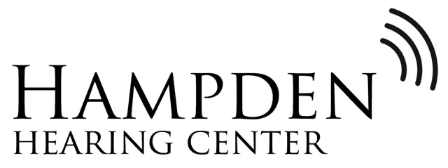If you have been referred for a diagnostic audiologic evaluation, it means that your hearing needs to be further examined. A diagnostic audiologic evaluation may be indicated for individuals who did not pass an initial hearing screening, or if symptoms you reported to your physician suggest you may have a hearing loss.
The evaluation is done to determine if a hearing loss is present and, if so, to detail the type and severity of the hearing loss. It also may provide insight into the cause of the hearing loss as well as provide guidance for the audiologist in making appropriate treatment recommendations or referrals to other professionals.

What tests will be done?
The specific tests done during the evaluation will depend on the patient’s symptoms and medical history. These various tests will determine the degree of hearing loss, the type of hearing loss and the conditions of the ear canal and middle ear. The audiologist will also establish if the hearing loss is conductive (middle or outer ear problem) or sensorineural (inner ear problem or an issue with the auditory nerve and central auditory pathways).
At a minimum, a diagnostic audiologic evaluation includes otoscopy (physical examination of the outer ear, ear canal and eardrum) and pure-tone testing and speech testing.
Pure-tone air and bone conduction testing
Pure-tone testing determines the softest tones that a person can hear at different frequencies, from low to high. Bone conduction testing is similar to air conduction testing, however, a different type of headset is used to provide the audiologist with different information. A bone conduction test will help the audiologist determine whether the loss is conductive or sensorineural in type.
Speech testing
A speech reception threshold (SRT) test is used to confirm the results of the pure tone testing. This test determines the lowest level of sound at which the patient can clearly identify words.
Word recognition testing measures how clearly a person can understand speech, once the volume of the speaker’s voice is loud enough.
Additional tests
The audiologist may perform tympanometry (measurement of function of the middle ear) to determine the health of the ear canal and the middle ear. Specialized testing, such as Otoacoustic Emissions measurement, may also be conducted.
Following the evaluation in a sound-treated booth, you will review the results with the audiologist. The audiologist will interpret the results for you, discuss the impact of any hearing loss on your life, answer your questions, provide you with information and referrals if needed, and begin planning for treatment, if indicated.
Audiologists are specialists in hearing and hearing rehabilitation. Never hesitate to ask your audiologist for clarification or further information on anything you do not understand.
What can I expect during a diagnostic hearing evaluation?
The evaluation in the sound-treated test booth will last about 30-40 minutes in length. You should also allow time for discussion with the audiologist to review test results and ask questions.
If the results indicate you need hearing aids, allow for sufficient time to discuss your options.
It is recommended that you bring a family member or trusted friend with you to the evaluation appointment. Most audiologists agree that hearing loss is a family issue. It helps to have another supportive person at the appointment to help you retain the information and recommendations.
Before your appointment, a complete medical history will be completed and the audiologist will want to hear about any concerns or observations you have about your hearing. The audiologist will pay special attention to any concerns you have about exposure to noise, tinnitus and balance problems. Make sure that you bring a complete list of any medications and supplements you are taking with you to your appointment.
The diagnostic audiologic evaluation is a good chance to establish a relationship with your audiologist. Above all, don’t be afraid to ask questions. You will want to be clear on any information you receive so that you can be an active participant in finding hearing solutions that work best for you and your lifestyle.
